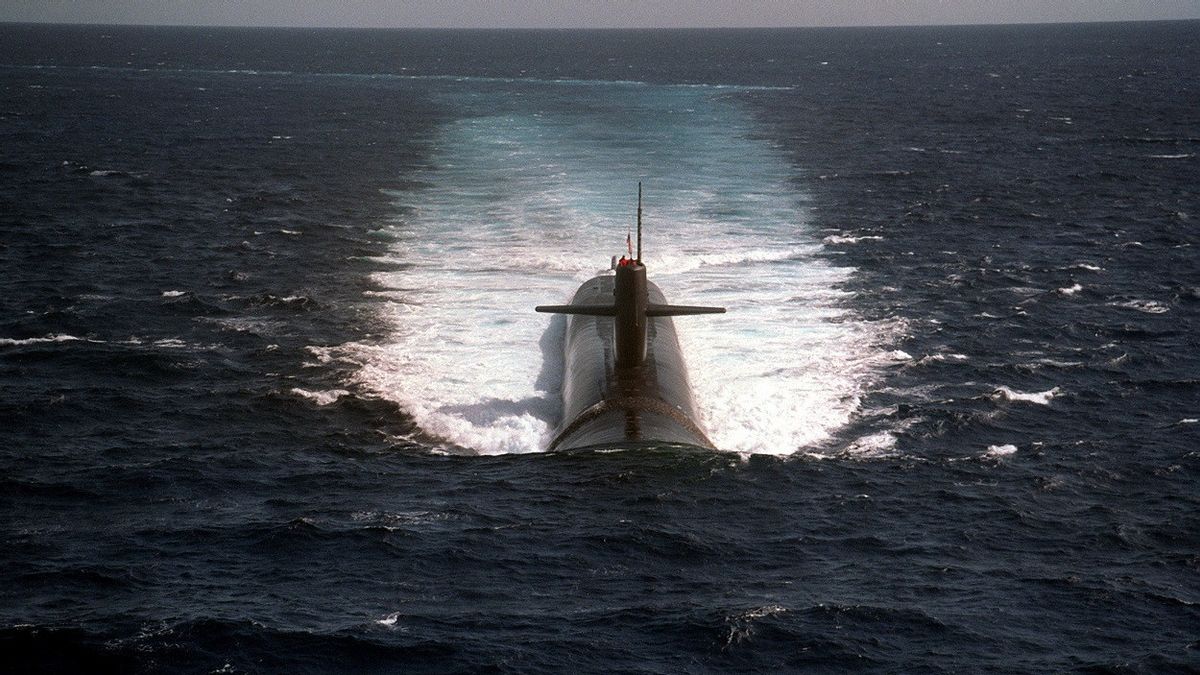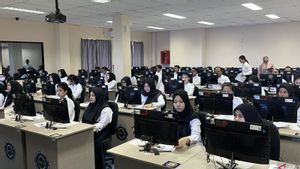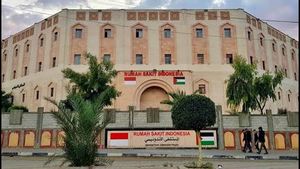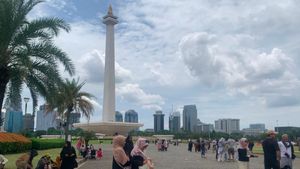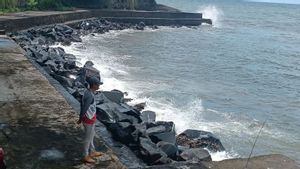JAKARTA - The United States plans to deploy its nuclear-armed submarine to South Korea, when President Joe Biden meets President Yoon Suk-yeol in Washington on Wednesday, to prevent North Korea from launching its nuclear weapons.
If realized, this will be the first time since 1981 that the US Navy's nuclear-armed ballistic missile (SSBN) submarine will visit South Korea.
"Our mutual defense agreement is very strong and that includes our commitment to expanding deterrence - and that includes a nuclear threat, a nuclear deterrent," President Biden said at a news conference at the White House with President Yoon.
Relying on confidentiality and stealth features to ensure survival and maintain their ability to launch nuclear missiles during war, the US SSBN rarely stops at foreign ports.
"That could be a huge pressure on North Korea, because usually they don't share where the submarine is," said Moon Keun-sik, retired submarine captain and South Korean squadron leader.
The United States has previously pledged to deploy more so-called "strategic assets" such as aircraft carriers, submarines and long-range bombers to South Korea, in order to prevent North Korea, which has developed increasingly powerful missiles, capable of achieving targets from South Korea to mainland the United States.
So, what are the specifications and capabilities of the Uncle Sam's submarine?
Built from 1976 to 1997, the first nuclear-powered ballistic missile (SSBN) submarine entered service in 1982. From the original 24 ships in the Ohio Class that were planned, a total of 18 units were realized.
The US Navy has 14 Ohio Class SSBNs. Eight of them are based in the State of Washington and six are based in Georgia. While the other four submarine units in this class are submarines with guided missiles (SSGN).
The 560-foot SSBN submarine, commonly called the "boomer", weighs more than 18,000 tonnes while diving. Each ship is powered by a nuclear reactor.
The Navy said the Ohio-class submarine was designed to spend an average of 77 days at sea, followed by 35 days at the port for maintenance. Each ship has two crew groups, a blue crew and a gold crew, which routinely rotate so that 155 submarine crew members on each ship get a break and proper training among patrols.
What about this submarine armament? In addition to the four Mk48 torpedo launcher tubes, each Ohio-class submarine carries a maximum of 20 Trident II ballistic missiles as the main weapon.
These missiles have a range of 4,600 miles (7,400 kilometers), meaning they are capable of hitting targets in North Korea from the Pacific Ocean, India, or the Arctic.
"In military terms, (this submarine) does not need to be near Korea to achieve potential targets there," said Blake Herzinger, a researcher at the United States Center for Studies.
Each Trident missile is capable of carrying multiple warheads that can be directed to different targets.
Experts at the James Martin Center for Nonproliferation Studies estimate that each Trident missile can carry four nuclear warheads, meaning each US ballistic missile submarine can carry about 80 nuclear warheads. In other words, one Trident armed submarine could destroy entire North Korea.
However, analysts say the presence of US Navy ballistic missile submarines at South Korea's port would be purely symbolic.
"Technically, (US and South Korea) are reducing the submarine's most powerful assets; its stealth capabilities," said Carl Schuster, a former US Navy captain and former director of operations at the US Pacific Command's Joint Intelligence Center in Hawaii.
It said, one of the keys to nuclear prevention is uncertainty.
"Nuclear silting requires that, although the enemy is aware of the existence and scale of nuclear state weapons, they cannot know for sure the level or location of their capabilities or when they might be used," wrote US Navy Rear Admiral Daniel Post in the journal 'Proceedings US Naval Institute' in January.
To note, US ballistic missile submarines hiding hundreds of meters below sea level thousands of miles from North Korea are still within Pyongyang's range of attack, but it is almost impossible to find by North Korea.
Meanwhile, submarines arriving in South Korea during port visits, which had to be arranged 24 to 48 hours earlier, would be much easier to see, thus providing benefits for North Korea, Schuster said.
"If Kim Jong-un wanted to make a surprise attack, we had given him the location of the submarine and when the submarine would be there," Schuster said.
The English, Chinese, Japanese, Arabic, and French versions are automatically generated by the AI. So there may still be inaccuracies in translating, please always see Indonesian as our main language. (system supported by DigitalSiber.id)
